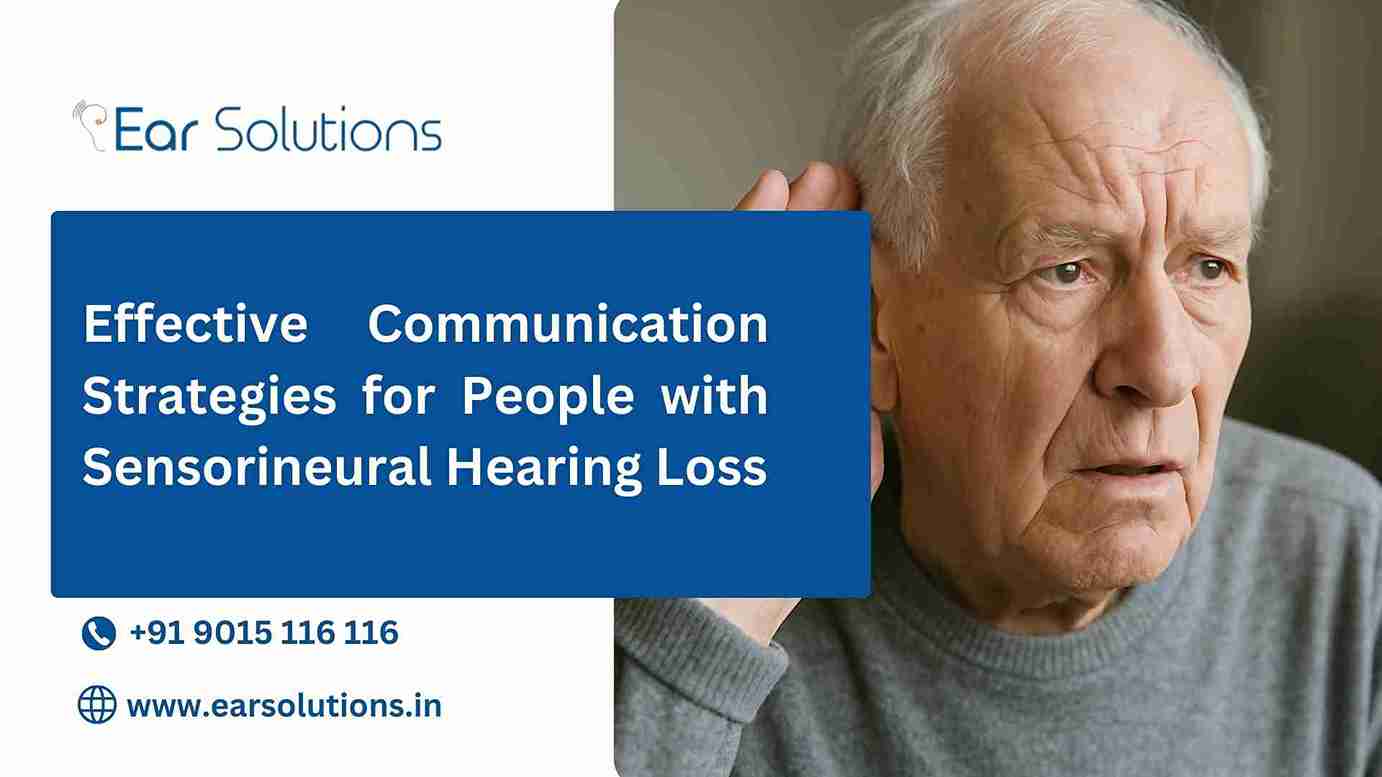
Discover practical and effective communication tips for individuals with sensorineural hearing loss.
Sensorineural hearing loss (SNHL) is one of the most common types of hearing loss, typically caused by damage to the inner ear (cochlea) or the auditory nerve. While it can’t always be medically cured, people living with sensorineural hearing loss can significantly improve their quality of life through advanced hearing technology and effective communication strategies. In this blog, we will explore practical ways for individuals with SNHL and their communication partners to connect more clearly and confidently.
Understanding the Challenge
Sensorineural hearing loss can range from mild to profound and often affects the clarity of sound, especially in noisy environments. People with SNHL may hear sounds but struggle to distinguish words or speech, particularly when there’s background noise or when someone speaks softly or too fast. This creates daily communication hurdles, but with the right approach, they can be managed effectively.
Top Communication Strategies for People with SNHL
Wearing a properly fitted hearing aid is the first step toward better communication. Modern devices like those from Signia, Phonak, or Widex come equipped with noise reduction, speech enhancement, and Bluetooth connectivity. Ensure regular tuning and maintenance for optimal performance.
Background noise is the biggest barrier to clear conversation for those with sensorineural hearing loss. Whenever possible, choose quieter environments to talk, restaurants with soft furnishings, private rooms, or outdoor settings away from traffic can help minimize distractions.
Lip reading and facial expressions are important cues for people with hearing loss. Ensure you’re facing the person directly when speaking, and maintain good lighting so your face is visible.
Speaking louder can distort speech, especially for those using hearing aids. Instead, speak slowly, clearly, and naturally. Pausing between sentences gives the listener time to process and respond.
If someone doesn’t understand you, try rephrasing your sentence rather than repeating the same words. This can help the listener catch different sounds or phrases they may have missed initially.
Tips for Communication Partners
Get Attention First: Before speaking, gently get the person’s attention with a wave or by saying their name.
Minimize Visual Barriers: Avoid covering your mouth while speaking and eliminate distractions like chewing gum or multitasking.
Use Gestures and Visuals: Use hand gestures, pointing, or write down key information when needed.
Be Patient and Supportive: Hearing loss can be frustrating. Offering support instead of showing impatience makes communication more positive and effective.
Conclusion
Living with sensorineural hearing loss doesn’t have to mean living in silence. With a combination of hearing technology, environmental adjustments, and mindful communication, people with SNHL can actively engage in conversations and lead fulfilling social lives. If you or someone you know is struggling to communicate, consulting a certified audiologist is the best first step.
© 2024 Crivva - Business Promotion. All rights reserved.